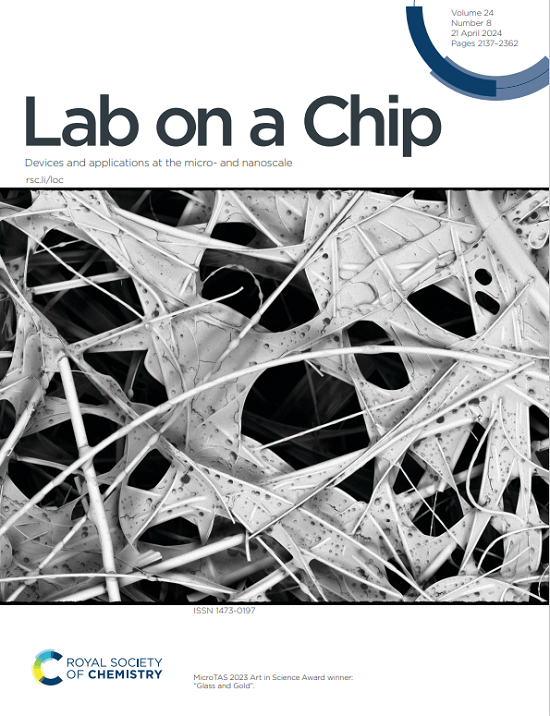混合气相色谱平台:用于低浓度挥发性有机化合物分析的简单配置的微型气相色谱系统
IF 5.4
2区 工程技术
Q1 BIOCHEMICAL RESEARCH METHODS
引用次数: 0
摘要
通过集成先前报道的混合微气相色谱柱芯片(混合芯片)和商用光电离检测器,开发了紧凑的混合气相色谱(GC)平台。该混合芯片可在单个设备中实现气体预富集和分离,从而实现高度紧凑和简单的平台设计,体积为0.62 L。样品体积为40.8 mL,分析时间为20分钟,对苯、甲苯、乙苯和邻二甲苯的检出限分别为19.3、22.8、30.1和24.4 ppb。苯和甲苯的线性范围为0.25-1 ppm,乙苯为0.25-1.5 ppm,邻二甲苯为0.25-2 ppm。峰值容量在5.34 ~ 8.81之间,半高全宽在0.22 ~ 0.5 min之间。重要的是,苯的检测限低于美国政府工业卫生学家会议(ACGIH)和国家职业安全与健康研究所(NIOSH)设定的美国工作场所空气浓度限值,证明了该平台在室内空气监测方面的潜力。此外,通过集成电池和载气过滤器包,增强了便携性。平台在分析(20分钟)期间消耗2.65 W,假设一个周期由20分钟的分析和10分钟的待机操作组成,系统理论上可以一次充电运行70个周期(35小时)。教室和实验室空气样本的现场测试证实了该平台的潜在适用性。此外,还实现了烷烃、醇类、醛类和酮类的部分定性分离,这表明在室内空气监测以外的领域有更广泛的用途。本文章由计算机程序翻译,如有差异,请以英文原文为准。
Hybrid GC Platform: A Micro Gas Chromatography System with a Simple Configuration for Low-Concentration VOCs Analysis
A compact hybrid gas chromatography (GC) platform was developed by integrating a previously reported hybrid µ-GC column chip (hybrid chip) and a commercial photoionization detector. The hybrid chip enabled both gas preconcentration and separation in a single device, allowing for a highly compact and simple platform design with a volume of 0.62 L. With a sample volume of 40.8 mL and an analysis time of 20 minutes, it achieved detection limits of 19.3, 22.8, 30.1, and 24.4 ppb for benzene, toluene, ethylbenzene, and ortho-xylene, respectively. The linear ranges were 0.25–1 ppm for benzene and toluene, 0.25–1.5 ppm for ethylbenzene, and 0.25–2 ppm for ortho-xylene. The peak capacity ranged from 5.34 to 8.81, with full width at half height between 0.22 and 0.5 min. Importantly, the detection limit for benzene was below US workplace air concentration limits set by the American Conference on Governmental Industrial Hygienists (ACGIH) and National Institute for Occupational Safety and Health (NIOSH), demonstrating the platform’s potential for indoor air monitoring. Furthermore, portability was enhanced through the integration with a battery and carrier gas filter pack. The platform consumed 2.65 W during analysis (20 minutes), and assuming one cycle consists of 20 minutes of analysis and 10 minutes of stand-by operation, the system could theoretically operate for 70 cycles (35 hours) on a single charge. Field testing with classroom and laboratory air samples confirmed the potential applicability of the platform. In addition, partial qualitative separations were achieved for alkanes, alcohols, aldehydes, and ketones, suggesting broader utility in fields beyond indoor air monitoring.
求助全文
通过发布文献求助,成功后即可免费获取论文全文。
去求助
来源期刊

Lab on a Chip
工程技术-化学综合
CiteScore
11.10
自引率
8.20%
发文量
434
审稿时长
2.6 months
期刊介绍:
Lab on a Chip is the premiere journal that publishes cutting-edge research in the field of miniaturization. By their very nature, microfluidic/nanofluidic/miniaturized systems are at the intersection of disciplines, spanning fundamental research to high-end application, which is reflected by the broad readership of the journal. Lab on a Chip publishes two types of papers on original research: full-length research papers and communications. Papers should demonstrate innovations, which can come from technical advancements or applications addressing pressing needs in globally important areas. The journal also publishes Comments, Reviews, and Perspectives.
 求助内容:
求助内容: 应助结果提醒方式:
应助结果提醒方式:


